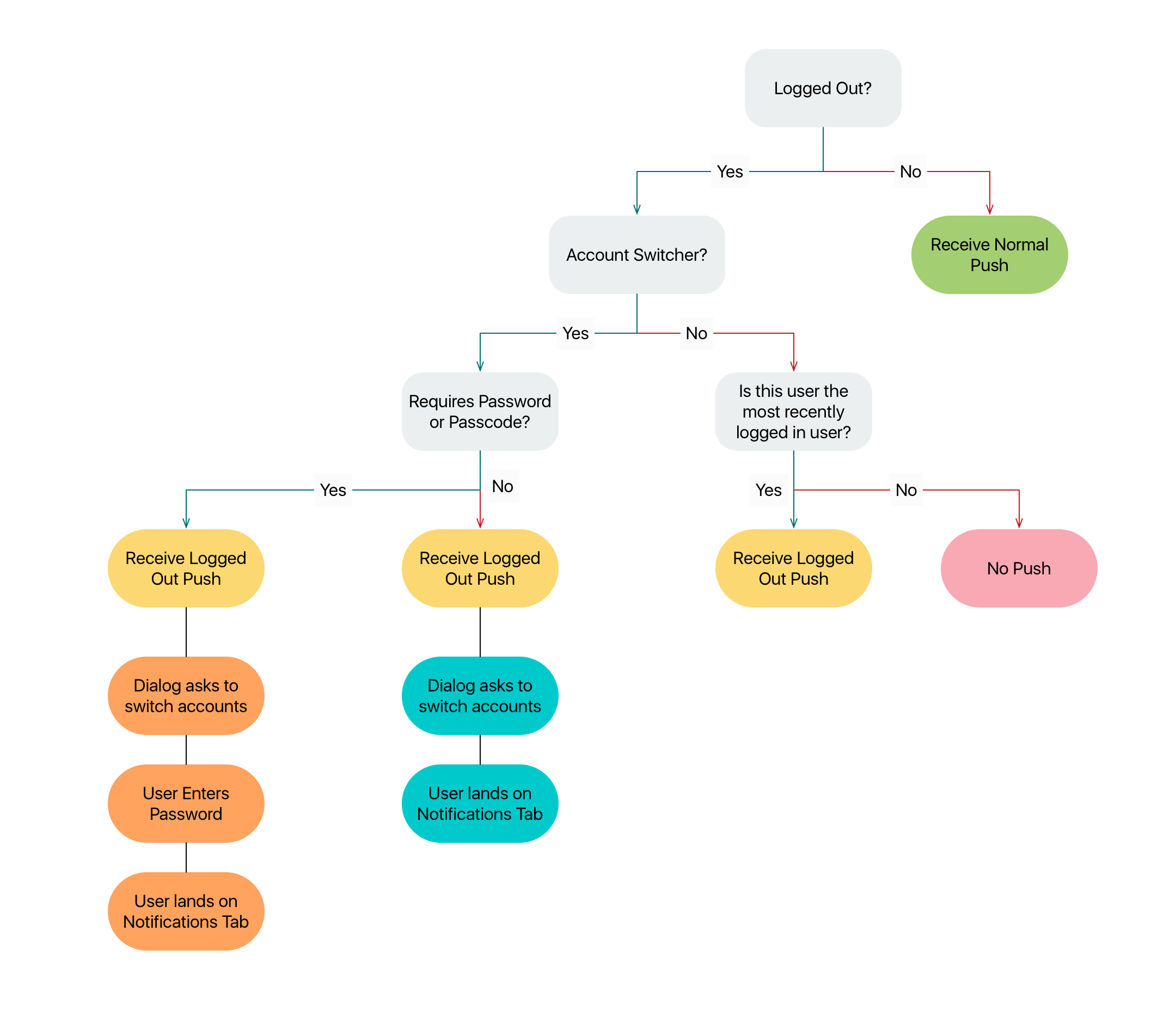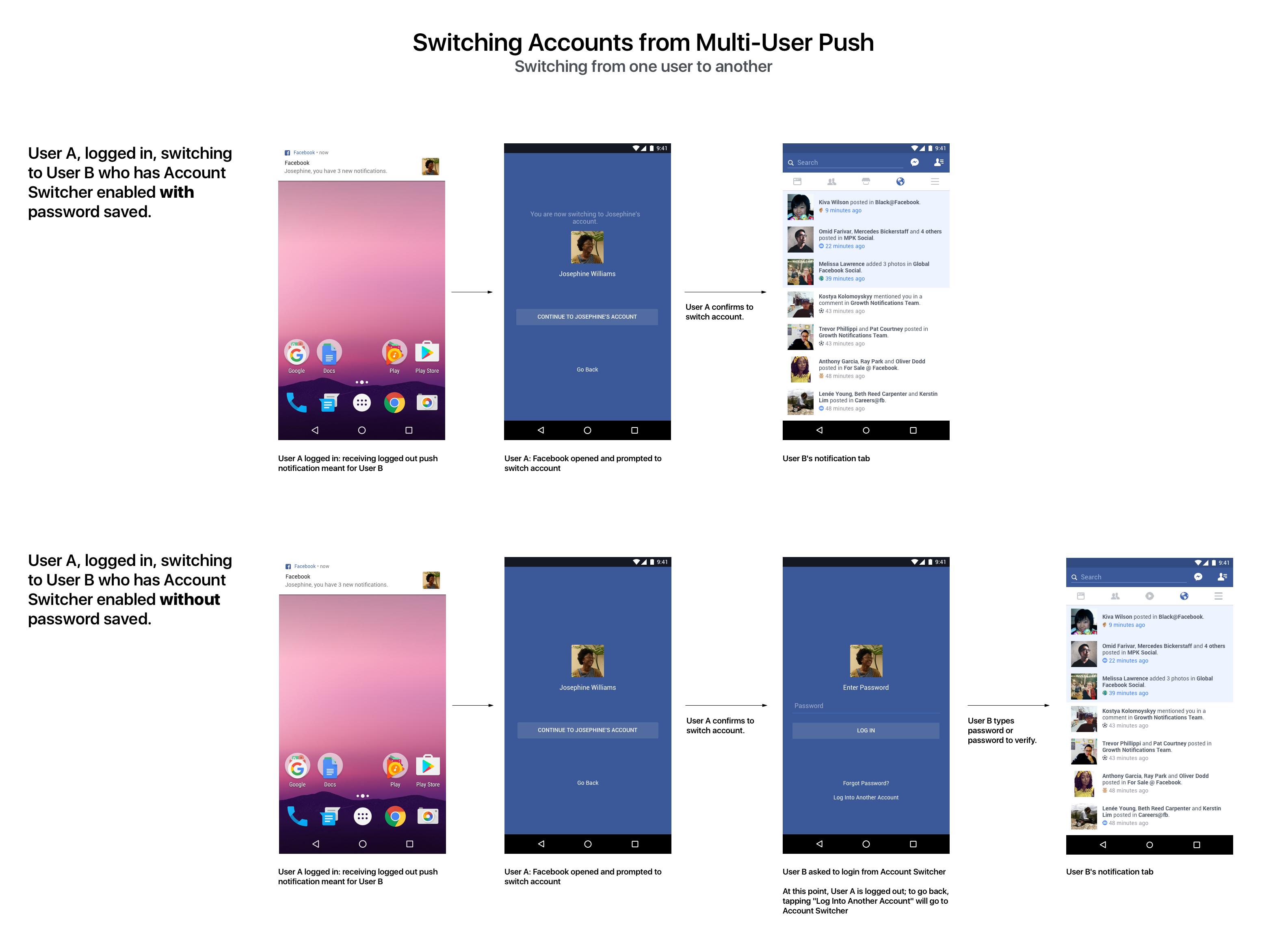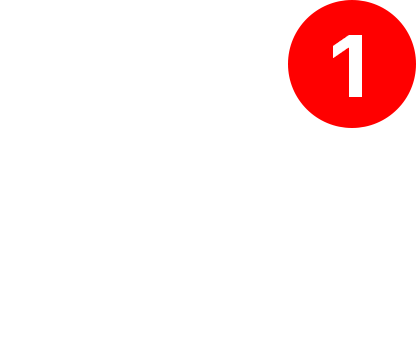

| Role | Product Designer |
| Company | |
| Projects | Notification Settings Redesign, Android and iOS Rich Push Notifications, Multi-User Push Notifications, SMS Shared Device Experience |
| Platforms | iOS, Android, and Web |
To help user growth, I worked on the notifications system that reaches over 2 billion users. Facebook is one of the largest senders of notifications, and my role is to create a dialog with users through push notifications, SMS, email, and exploratory channels. I also map the end-to-end experiences from the circumstances in which a user receives a notification to the resulting landing experience.
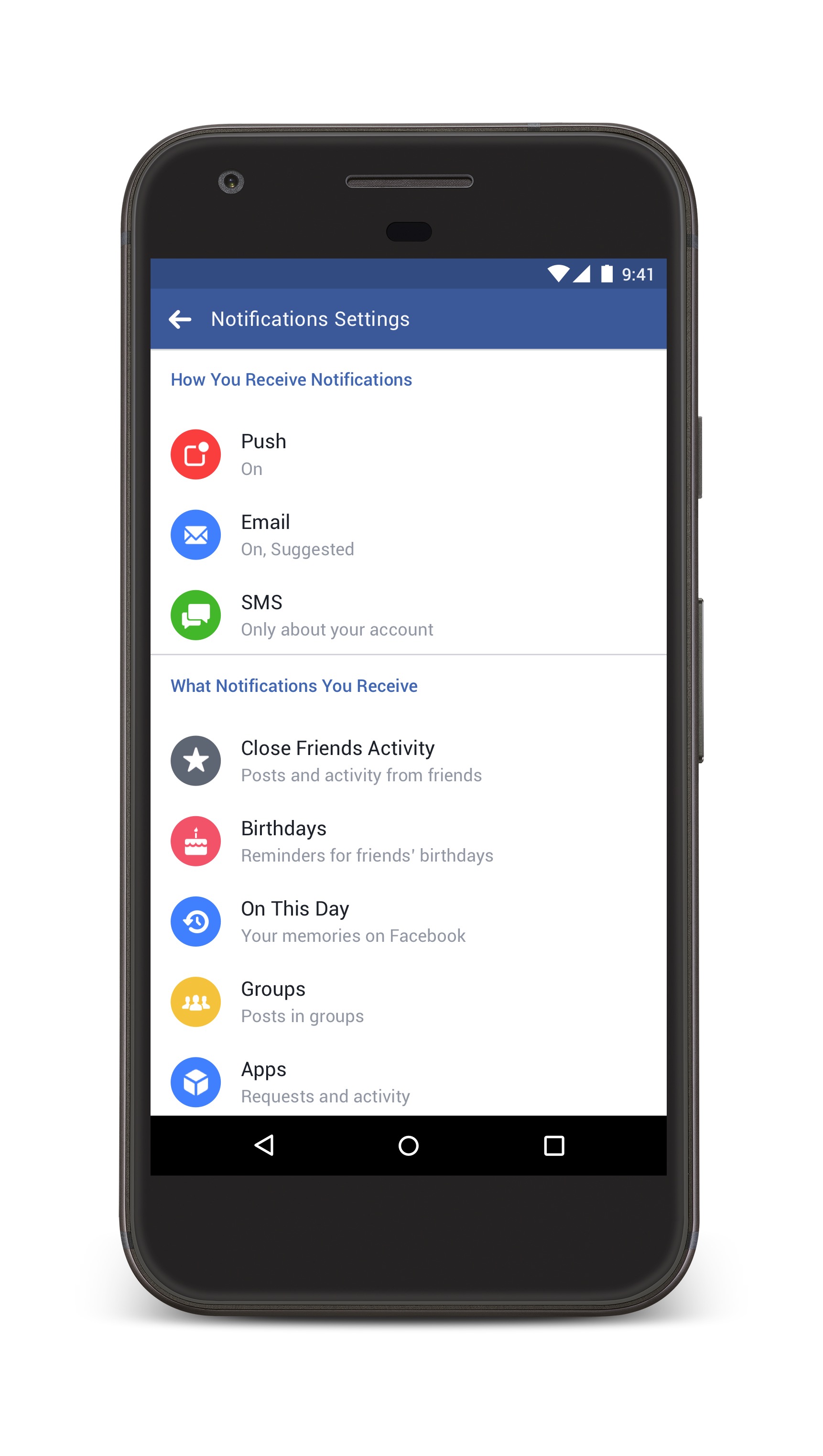
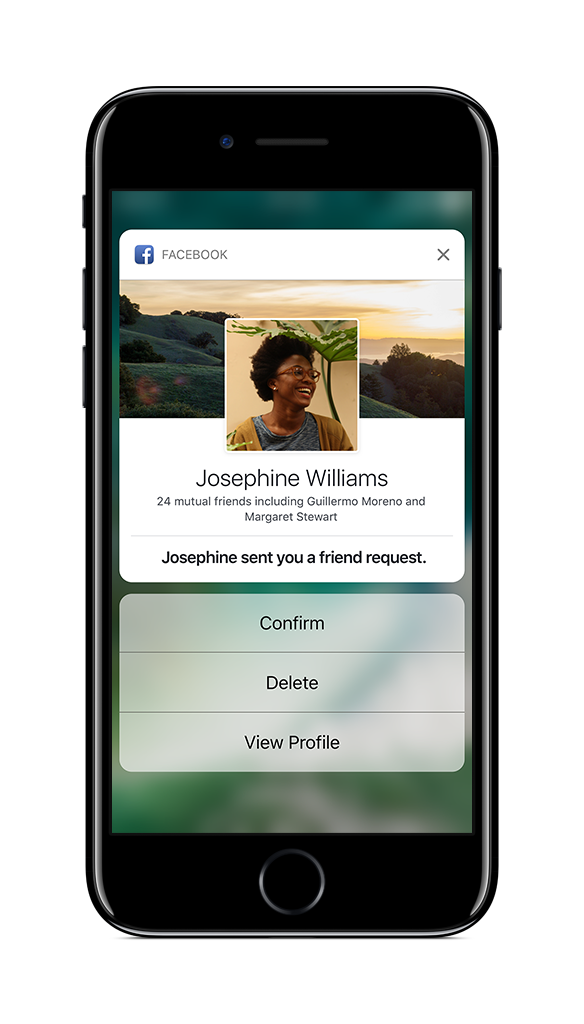

As Facebook grows and introduces many new features, users may feel overwhelmed by the notifications they receive. If they feel too annoyed by some notifications they find irrelevant, they may turn off all push notifications and end up no longer receiving notifications they do care about. We set out to solve this issue for users with a two pronged approach:
1) Keep improving our machine learning systems to better target and time notifications
2) Give users more flexibility in deciding when and where they receive notifications and what types.
For the latter, our current system, a web view created many years ago, simply couldn't address these needs, so this led to an initiative to redesign and improve our notification settings.
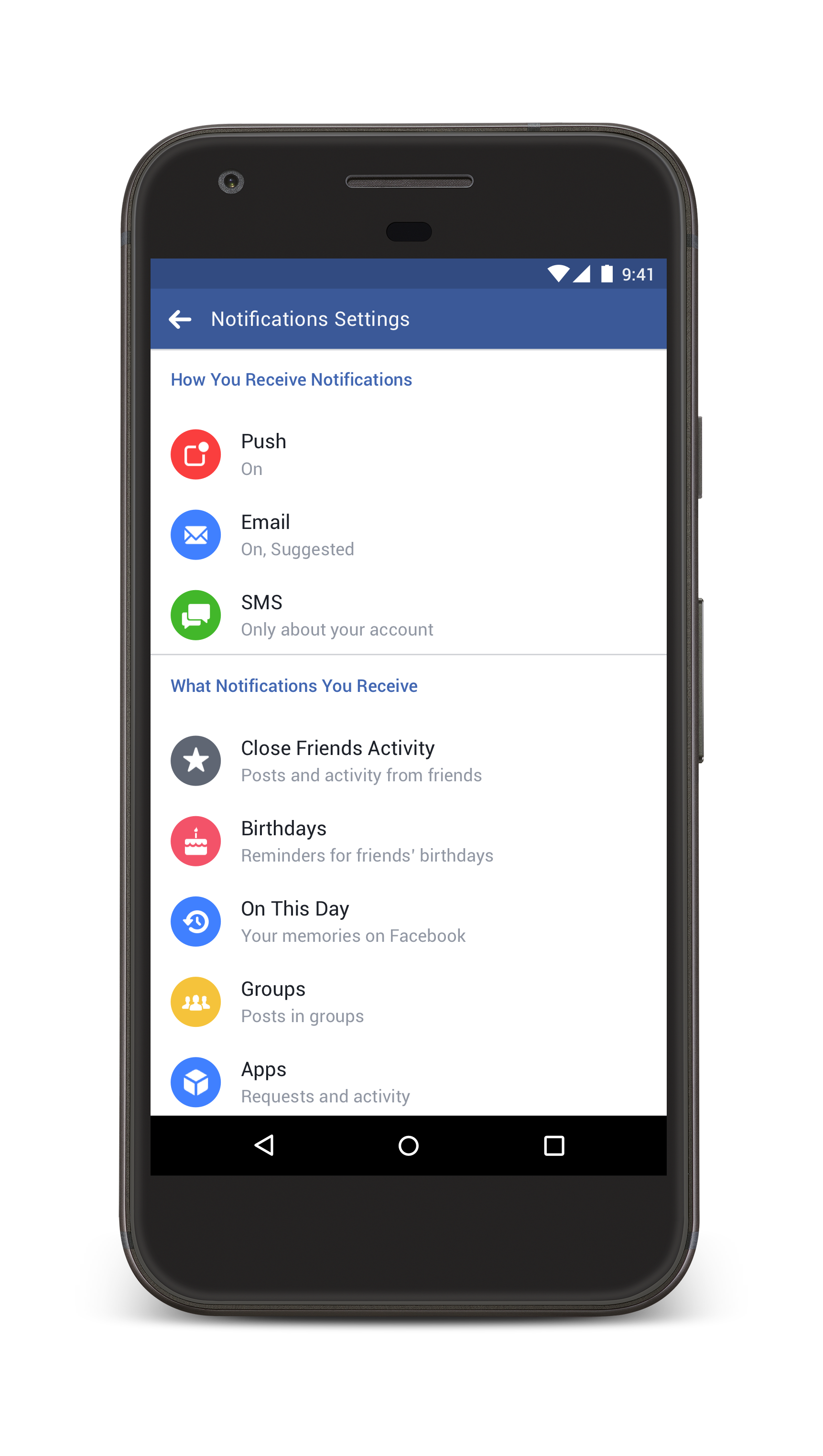
From our own intuition, which was validated by user research, we believed categorization would play the most important part in customizing notifications. It became clear that users have categorized Facebook notifications in their own way. To categorize, we looked at our most common notifications sent by reach and also asking users in research sessions to categorize their own notifications.
Strategically, a thorough categorization is also important for scaling as teams across Facebook add new notification types. That way, as new categories are added, there is already a systematic, familiar way for users to control them.
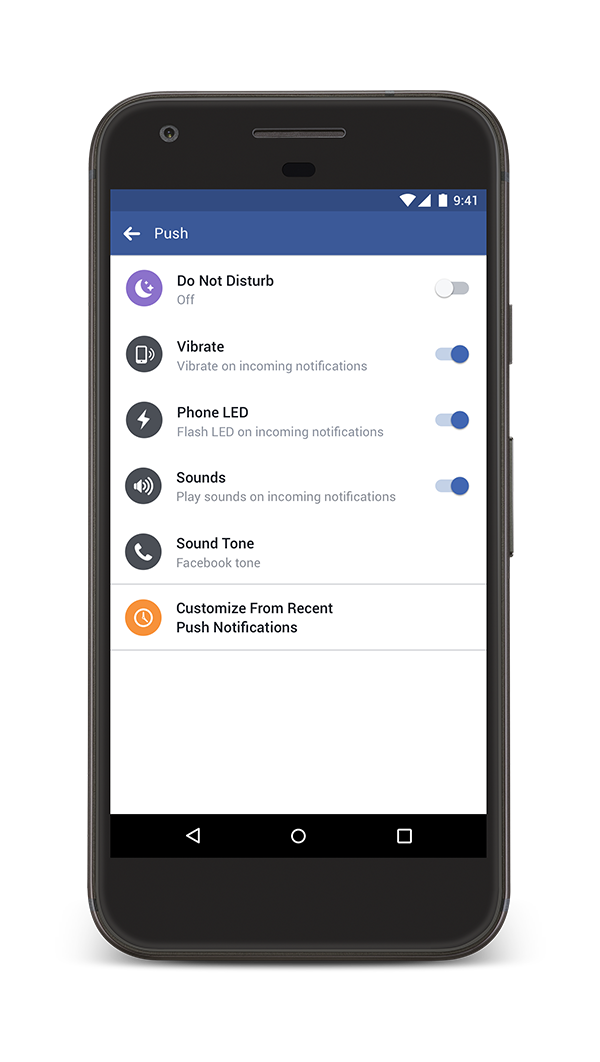
Do Not Disturb
Not every moment is the right time to be interrupted, so we built a "Do Not Disturb" feature to mute notifications for a duration set by the user.
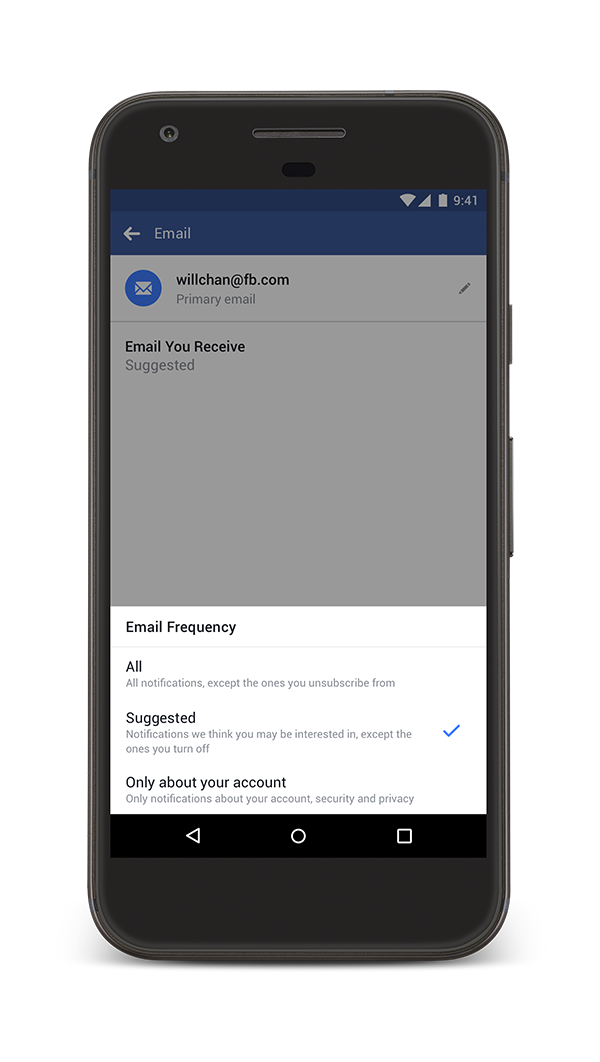
Email Frequency
For email and SMS channels, adjusting frequency of notifications is easier and with clearer language.
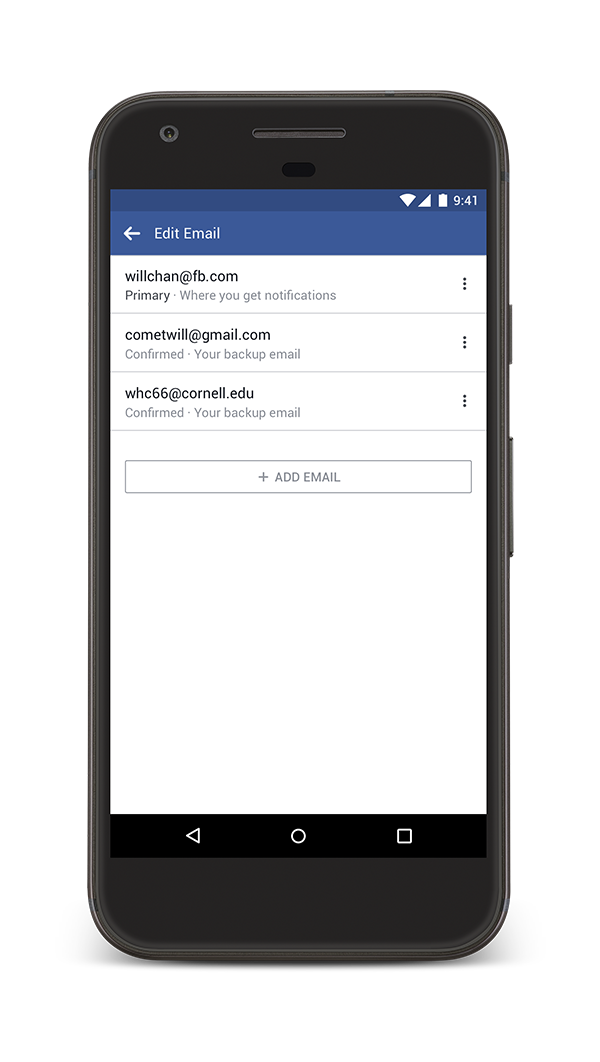
Add/Edit Contact Information
Adding or removing contact information can now be done within notifications settings instead of being taken to a different flow.
With the new technologies available to us to enhance our notifications, I sought out to find the types of notifications that would be good candidates to test rich notifications. Upon examining the structure of what Google and Apple have afforded us, rich notifications can be broken down into two components: rich content and inline actions. Of the notifications Facebook sends, the friend request notification seemed to be a perfect candidate that had both these components. Richer content would allow users to see more context (such as mutual friends), and the friending action played a critical role in making Facebook useful for a user. Tagged photos were also a great candidate as well, letting users more easily see photos and decide whether to like or comment.


In emerging markets, users are more likely to share their mobile device with family and friends. Since mobile operating systems don't accomodate this use case very well, it can be difficult for each user of a mobile device to have a complete experience with Facebook, including notifications. If a user is logged out, then prior to the multi-user notifications feature, they could no longer receive push notifications. This project sought to change this. For this feature, I worked closely with the Facebook Login team to map out the conditions in which push notifications are sent and how much content can be shown in order to respect user privacy, and then figured out how the UI would have to work in order to achieve this.
